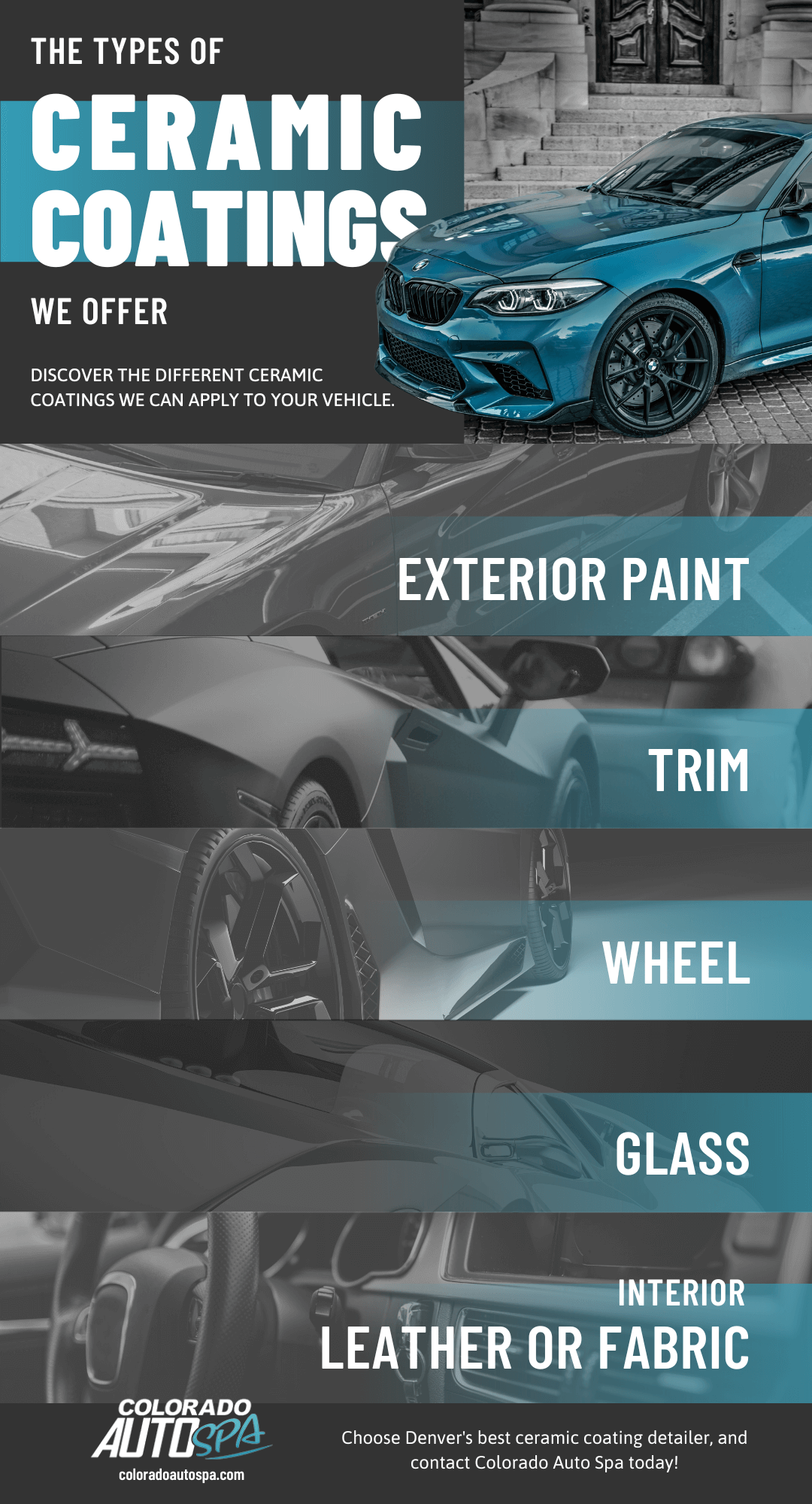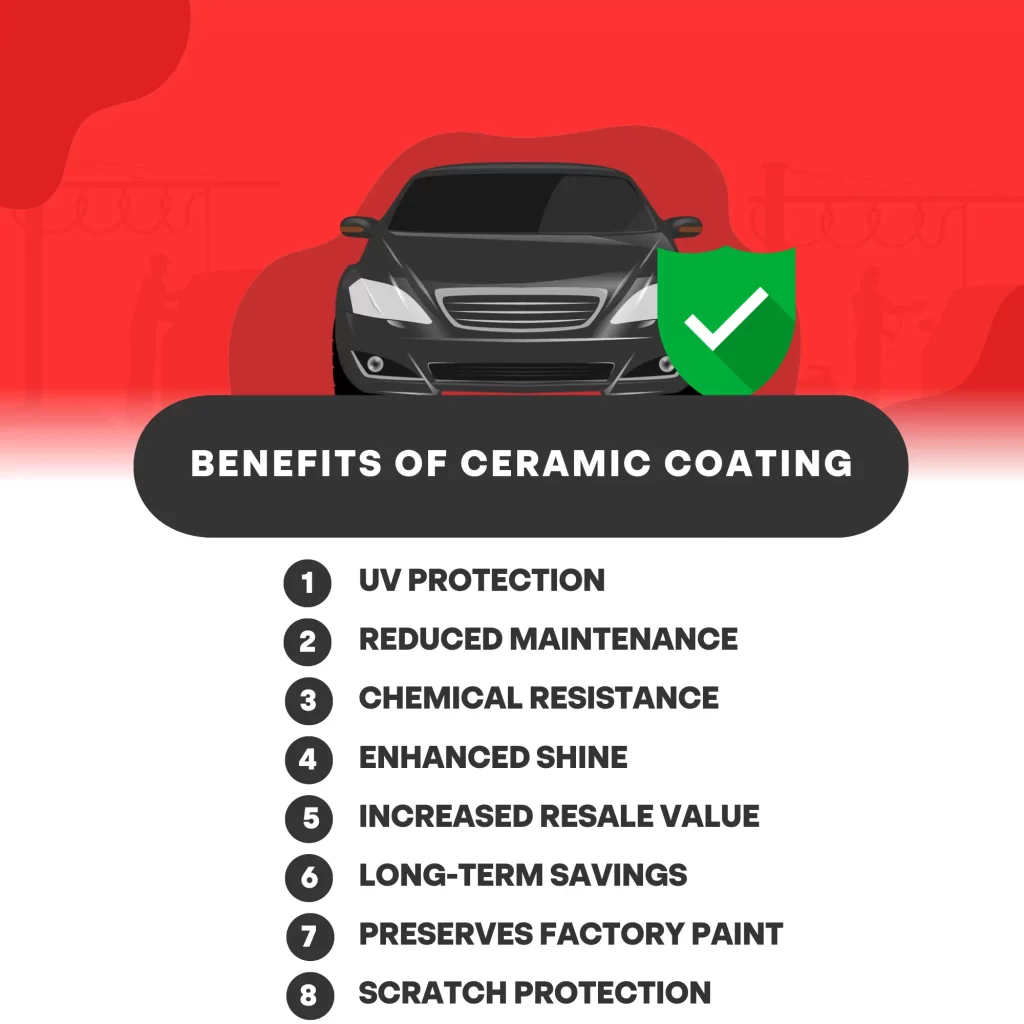Protect Your Car from the Elements with Ceramic Coating Technology
Protect Your Car from the Elements with Ceramic Coating Technology
Blog Article
Ceramic Covering vs. Typical Wax: Which Offers Better Long-Term Security?
The discussion in between ceramic finishings and typical wax for lorry protection has amassed considerable focus among automotive lovers and professionals alike. While both offer the purpose of guarding paint, their distinctions in toughness, application, and lasting upkeep expenses might affect a customer's option. Ceramic finishes flaunt exceptional long life and resistance to environmental elements, yet the intricacy of their application questions regarding ease of access and functionality. As we check out these contrasting choices, it comes to be important to consider not only the prompt advantages but also the implications for vehicle treatment with time.
Introduction of Ceramic Finishing
Ceramic coating has actually acquired substantial popularity among auto lovers and detailers alike as a result of its sophisticated safety high qualities. This cutting-edge innovation is made to produce a sturdy, hydrophobic shield over a car's paint surface area, considerably boosting its resistance to environmental pollutants such as dust, UV rays, and chemical stains. Unlike conventional wax, which supplies a temporary layer of security, ceramic finishings bond at a molecular level with the paint, using durable toughness-- often expanding past two years with appropriate upkeep.
The application procedure involves precise prep work of the lorry's surface, including cleansing and brightening to make certain optimal bond. When used, the covering remedies to create a durable layer that not just adds depth and gloss to the paint but also simplifies maintenance. With its hydrophobic properties, ceramic covering enables water and dust to glide off more easily, decreasing the frequency of laundries and lessening the threat of swirl marks.
Furthermore, ceramic finishes are available in different formulas, permitting individuals to pick items customized to their certain needs and preferences. Overall, ceramic covering represents a significant advancement in paint defense innovation, providing exceptional performance contrasted to traditional choices.
Overview of Typical Wax
Commonly considered as a staple in vehicle care, wax functions as a preferred option for those seeking an uncomplicated technique to enhance and shield their automobile's paint - ceramic coating. Automotive wax usually comprises all-natural components, such as carnauba, or synthetic substances, created to produce a protective layer externally of the paint. This layer not just improves the vehicle's gloss and beam but also gives a barrier versus environmental impurities
The application of wax is generally straightforward, making it available for both specialists and DIY enthusiasts. As soon as used, wax needs a curing duration, after which it sets to form a protective shell.
Nonetheless, while wax is effective for improving the visual allure of a vehicle, it is very important to keep in mind that the defense it offers may require extra frequent reapplication compared to alternative products, such as ceramic finishings. On the whole, conventional wax continues to be a favored choice for those focusing on ease of use and immediate visual enhancement.
Toughness and Long Life Comparison
While both ceramic finishings and standard wax deal safety advantages for automotive paint, their sturdiness and durability vary dramatically. Traditional wax, generally made from all-natural carnauba or synthetic polymers, normally supplies a safety layer that lasts about three to 6 months. This relatively short life expectancy demands normal reapplication to preserve ideal security.
In comparison, ceramic finishings are crafted from sophisticated nanotechnology, forming a covalent bond with the paint surface area. This leads to a durable, hydrophobic layer that can sustain for 2 to five years, depending upon the item and ecological problems. The exceptional toughness of ceramic finishes is credited to their chemical structure, which offers enhanced resistance to scrapes, UV rays, and oxidation.

Security Versus Environmental Factors
Protecting a lorry's paint from ecological variables is critical for maintaining its appearance and value with time. Automobiles are frequently exposed to a selection of components, including UV rays, bird droppings, tree sap, acid rainfall, and roadway grime, every one of which can endanger the integrity of the paintwork.
Ceramic layers offer a durable protection against these environmental aggressors. Unlike typical wax, which can deteriorate swiftly under UV direct exposure, ceramic finishes create a resilient, hydrophobic layer that stands up to the damaging effects of sunshine and environmental pollutants. This sophisticated technology produces a chemical bond with the lorry's surface, providing remarkable defense that lasts for many years, even in extreme problems.
Traditional wax, while simpler to use, commonly requires regular reapplication and uses minimal resistance to contaminants and UV rays. In time, it can damage down, leaving the paint vulnerable to scrapes and oxidation. In comparison, ceramic coatings preserve their safety qualities longer, dramatically minimizing the risk of paint damages and making sure that the automobile retains its aesthetic allure. Therefore, ceramic layers are progressively recognized as the premium option for lasting security against environmental aspects.
Application and Upkeep Distinctions
The techniques of application and subsequent upkeep for ceramic finishes and standard wax differ considerably, impacting the total customer experience and efficiency of each product. Ceramic coverings call for read more a more elaborate application procedure, usually involving surface area preparation that includes cleaning, decontaminating, and brightening the automobile. Once the surface area prepares, the ceramic layer is applied in a controlled atmosphere, often needing specialist knowledge to make certain go to my site proper treating and bonding to the paint.

While both items boost vehicle appearance, the longer-lasting protection provided by ceramic layers may justify their first financial investment, despite the more requiring application procedure. Alternatively, traditional wax remains a popular choice for those seeking a simpler, albeit short-term, service.

Conclusion
To conclude, ceramic finishes show significant advantages over conventional wax in terms of sturdiness and ecological security. With a life expectancy prolonging two to five years and exceptional resistance to UV rays, dust, and chemical discolorations, ceramic coatings offer an extra reliable option for long-term vehicle upkeep. The application process might call for expert experience, the resulting expense savings and lowered frequency of reapplication highlight the worth of ceramic layers for those seeking optimum automobile defense.
The discussion between ceramic coverings and typical wax for automobile protection has actually gathered substantial interest amongst vehicle enthusiasts and specialists alike. Unlike conventional wax, which gives a momentary layer of protection, ceramic layers bond at a molecular level with the paint, supplying resilient resilience-- often expanding beyond two years with correct maintenance.
While both ceramic layers and conventional wax deal safety benefits for vehicle paint, their resilience and durability vary considerably. For auto enthusiasts find more info looking for lasting protection, ceramic finishes present a compelling benefit over typical wax products.
In final thought, ceramic layers demonstrate significant benefits over typical wax in terms of resilience and ecological defense.
Report this page